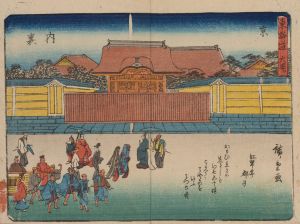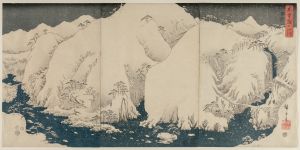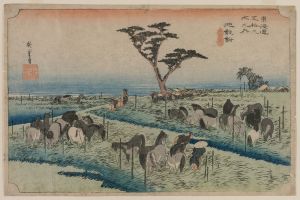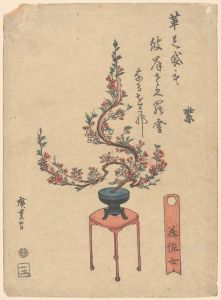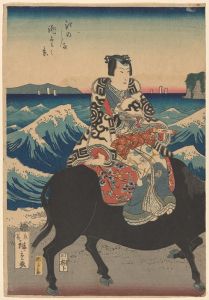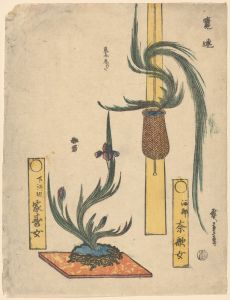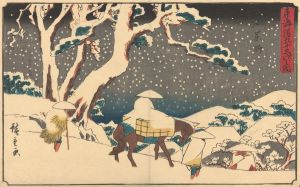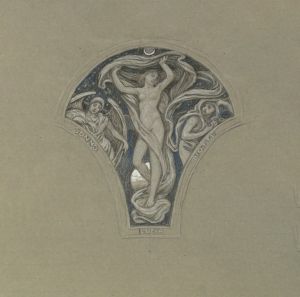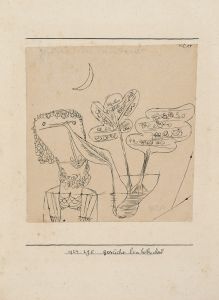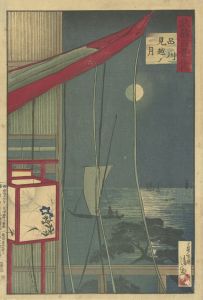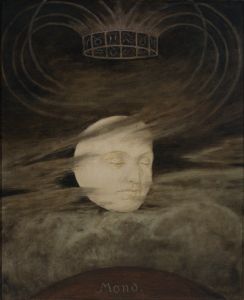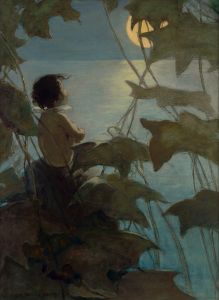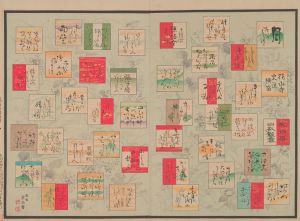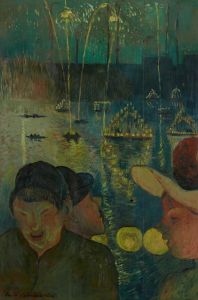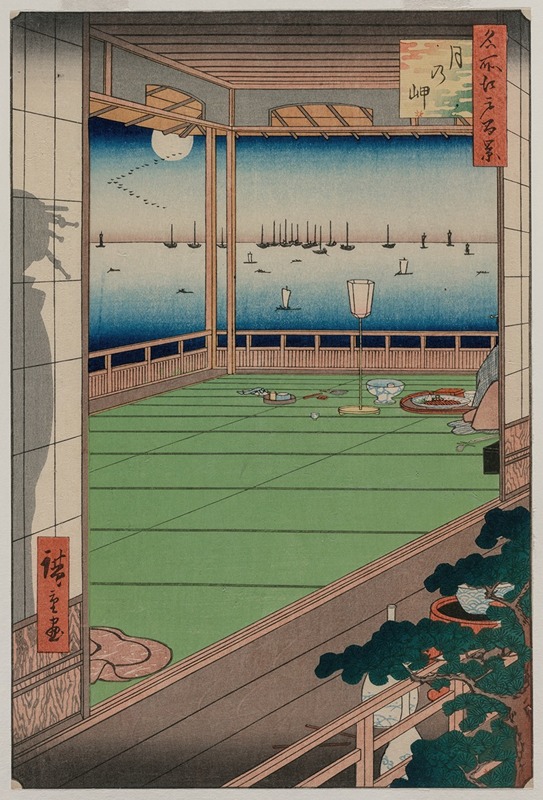
The Moon-Viewing Promontory, from the series One Hundred Views of Famous Places in Edo
A hand-painted replica of Andō Hiroshige’s masterpiece The Moon-Viewing Promontory, from the series One Hundred Views of Famous Places in Edo, meticulously crafted by professional artists to capture the true essence of the original. Each piece is created with museum-quality canvas and rare mineral pigments, carefully painted by experienced artists with delicate brushstrokes and rich, layered colors to perfectly recreate the texture of the original artwork. Unlike machine-printed reproductions, this hand-painted version brings the painting to life, infused with the artist’s emotions and skill in every stroke. Whether for personal collection or home decoration, it instantly elevates the artistic atmosphere of any space.
"The Moon-Viewing Promontory" is a woodblock print by the renowned Japanese ukiyo-e artist Andō Hiroshige. It is part of his celebrated series "One Hundred Views of Famous Places in Edo" (Meisho Edo Hyakkei), which was published between 1856 and 1858. This series is one of Hiroshige's most famous works and is highly regarded for its artistic and historical significance.
Andō Hiroshige, born in 1797, was a master of the ukiyo-e genre, which flourished in Japan from the 17th to the 19th centuries. Ukiyo-e, meaning "pictures of the floating world," often depicted landscapes, tales from history, the kabuki theater, and scenes from everyday life. Hiroshige is particularly known for his landscape prints, which capture the beauty and transience of nature.
"The Moon-Viewing Promontory" is a quintessential example of Hiroshige's skill in landscape depiction. This print illustrates a scene from Edo, the historical name for Tokyo, during the Edo period (1603-1868). The series "One Hundred Views of Famous Places in Edo" was created during a time when Edo was a bustling metropolis and the political center of Japan. The series captures various locations around the city, showcasing both natural beauty and urban life.
In "The Moon-Viewing Promontory," Hiroshige presents a serene and contemplative scene. The composition typically features a promontory or elevated viewpoint, which allows viewers to gaze upon the moonlit landscape. The moon, a common motif in Japanese art, symbolizes beauty, tranquility, and the passage of time. Hiroshige's use of color, perspective, and detail invites viewers to immerse themselves in the peaceful ambiance of the scene.
Hiroshige's work is characterized by its innovative use of perspective and color. He often employed a technique known as bokashi, which involves the gradual blending of colors to create a sense of depth and atmosphere. This technique is evident in "The Moon-Viewing Promontory," where the subtle gradations of color enhance the mood of the scene. The print also reflects Hiroshige's keen observation of nature and his ability to convey the changing seasons and times of day.
The "One Hundred Views of Famous Places in Edo" series was produced using the traditional Japanese woodblock printing technique. This involved carving an image into a wooden block, applying ink, and then pressing paper onto the block to create the print. Each color required a separate block, and the process demanded great skill and precision. Hiroshige collaborated with skilled carvers and printers to bring his designs to life.
Hiroshige's prints, including "The Moon-Viewing Promontory," have had a lasting impact on both Japanese and Western art. His work influenced the Impressionists and Post-Impressionists, including artists like Vincent van Gogh and Claude Monet, who admired his composition and use of color. Today, Hiroshige's prints are celebrated for their beauty and historical value, offering a glimpse into the cultural and natural landscape of 19th-century Japan.
"The Moon-Viewing Promontory" remains a testament to Hiroshige's artistic vision and his ability to capture the ephemeral beauty of the world around him. Through his work, viewers are invited to appreciate the harmony between nature and human life, a theme that resonates across time and cultures.





